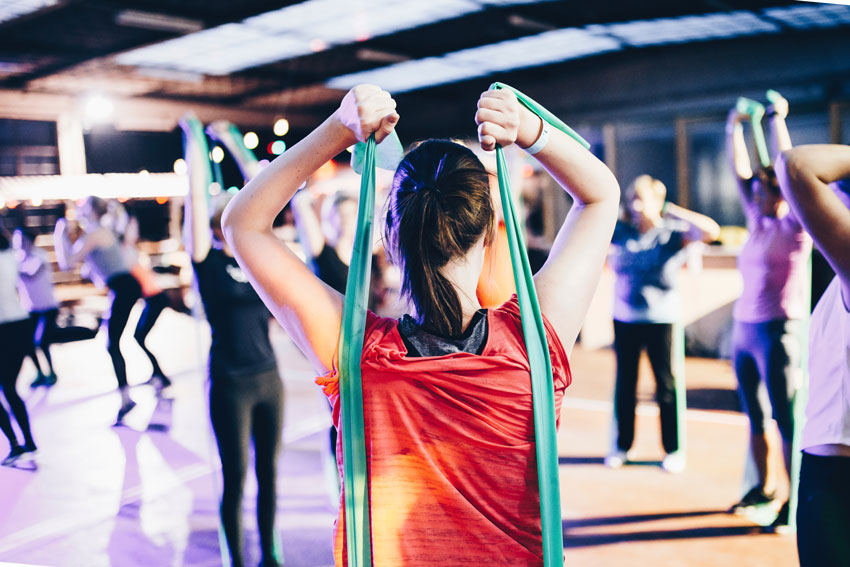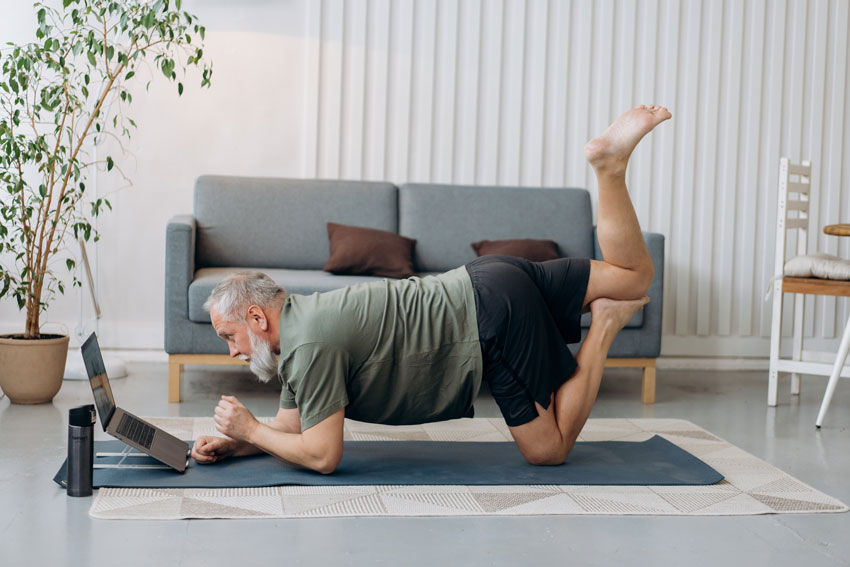The best exercise for weight loss is one that you enjoy!
Exercise shouldn’t just be about slimming down, you should enjoy any form of exercise that you do so that it doesn’t become a chore.
For example, some people love running, other people can’t stand it and would much rather spend an hour dancing or playing football with friends.
It doesn’t really matter how you choose to move your body, as long as you’re moving it in a way that you enjoy and that feels good to you.
You’re more likely to want to exercise if it’s something that you enjoy doing.

The best thing about exercise is that there’s so much variety.
You can either work out on your own if you prefer solitude, or you can join (or start) a local group!
Some people that embark on a weight loss journey believe that they need a gym membership for exercise.
This simply isn’t true.
Some people do prefer to work out at a gym, but many enjoy free activities that are just as good.
If the thought of a treadmill or cross-trainer fills you with dread, how about a brisk walk in the countryside?
There are options for all ages and abilities.
One of the sports that’s growing in popularity amongst communities is walking football.
This is a sport that’s aimed at those who’d like to play football but struggle with running.
It’s a great way of getting active and participating in a fun sport with others of a similar ability.
Many local sports and leisure centres also run group classes, check your local centre for what’s available near you.
You might expect to find classes such as:
- Zumba
- Yoga
- Spinning
- HIIT (high intensity interval training)
- Boxing
- Aerobics
Depending on your local area you may also find other activities nearby.
For example, if you live near the coast you might want to try surfing.
Those living in scenic areas might want to join a walking group to see more of the great outdoors.

There’s no end to the possibilities with exercise.
You may also find that you pick up a new hobby along the way.
Weight loss shouldn’t consume your entire life.
When we obsess over our weight it can become a dangerous trap.
That’s another reason why enjoyable workouts are important.
When you exercise for the fun of it, it can help to shift the focus away from weight loss.
This is great because if you’re only exercising to reduce your size, you run the risk of stopping once you’ve reached your target weight.
Making sure that you choose fun activities means that you’re more likely to continue with them as a lifestyle change.
Cardio is generally recommended as one of the best types of exercise for weight loss.
This is because it raises your heart and respiration rates which help to burn more calories.
Cardio exercise is also sometimes called aerobic exercise.
Both of these terms describe any type of exercise that raises your heart and breathing rates.
Cardio or aerobic exercise can also help to expand your lung capacity which should help you to breathe better during exercise over time.
If you’re stuck on ideas, we have some advice on how to do cardio at home.
Alternatively, you might want to follow an exercise plan to keep you on track.
The Couch to 5K plan is popular with many beginners.
It gradually increases your intensity levels over nine weeks, with three runs per week.
An alternative workout regime is the NHS’ Strength and Flex plan.
This aims to build your body’s strength and flexibility over five weeks.
Strength and Flex is particularly good for older adults and those who are new to regular exercise.
Although cardio is hailed as the exercise that burns the most calories, it’s important to remember other types of workouts.
When you’re losing weight, it’s also important to remember to work on your muscles.
Activities like yoga, pilates, and weight training can help to tone and strengthen your muscles. It can even help to reduce the risk or appearance of loose skin after weight loss.

Strengthening your muscles is always important, whether you’re trying to lose weight or not, this is because strong muscles help to strengthen bones.
In turn, this reduces your risk of injury and certain health conditions.
It’s important to remember that if you’re building muscle, your fat loss may not show on the scales.
This is because muscle is more dense than fat.
By measuring yourself in more ways than one, you can track your overall progress.
For example, you could use a tape measure or monthly progress photos.
How much exercise for weight loss per week?
The government and NHS recommend that adults should do at least 150 minutes of moderate-intensity exercise per week.
This amounts to around 20 minutes per day if you were to split it evenly throughout the week.
It’s also recommended that you should work out for at least 10 minutes at a time.
The NHS describe moderate exercise as being able to “talk but not sing”.
This is useful to remember whilst you’re working out so that you can gauge how hard you’re working.
20 minutes of moderate exercise per day (or 150 minutes a week) should be achievable for most.
However, 150 minutes is just a guide.
The amount of exercise that you need to do to lose weight can depend on several factors.

Those with a higher weight are likely to burn more calories than someone with a lower weight doing the same activity at the same intensity.
Because of this, you might find that you need to do more exercise as you lose weight.
This is normal and doesn’t mean that you’re doing anything wrong.
It simply means that as you’re losing weight, your body is burning fewer calories than before.
This means that you need to increase how hard you work or how often you work out in order to burn the same amount.
You’ll probably find that you require different levels of exercise throughout your weight loss journey.
If you can’t handle 150 minutes of exercise a week at first, don’t worry.
The most important thing is progress.
Even those with limited mobility should aim to increase their current levels of activity if possible.
Exercise is still important, even with weight loss treatments.
Physical activity is a form of self-care, both for your body and your mind.
It’s also a vital part of a healthy lifestyle.
Working out can help your general health in so many different ways.
It can even help to reduce your risk of various diseases such as diabetes, heart attack, and stroke.
Making sure that you exercise is also making sure that you’re looking after your organs.
According to data from Public Health England, only 66.4% of adults in England are physically active.
This may partly be down to modern life.
Technology has changed how humans work, and today’s society is much less active than we were a few decades ago.
Many people spend a lot of their time sedentary due to office work, commuting, and other consequences of modern life.
In fact, according to the British Heart Foundation, many adults spend around 9.5 hours a day sitting down.
Because of this, we need to make more of an effort to fit exercise into our lives.
You could start to increase the amount of physical activity you do by reducing how much time you spend sitting down.
If you have a desk job, try walking around every hour or so.
You could even try working whilst standing up.
If you commute to work on public transport, you might want to get off a stop earlier.
You could even walk the long route from your stop or station.
Those that drive could look at parking further away from their workplace.
If you normally use lifts or escalators, the stairs can be a good option for getting your heart rate going and giving your legs a workout.

Those that are able to should aim for the recommended 150 minutes of moderate exercise per week.
If you can handle more, that’s great! You should listen to your body and not work past your limits.
Is walking or running better for weight loss?
It completely depends on several factors.
When it comes to weight loss, the key is to achieve a consistent and sustained negative energy balance.
This means burning more calories than you consume.
You could go on a 10 minute run and burn fewer calories than you would on a two-hour hike.
It all depends on these two factors:
Time: How long you spend exercising can determine how many calories you burn.
Generally, the longer you work out, the more calories you’ll burn.
Intensity: How hard you work when you’re exercising.
If you can have a conversation whilst you’re walking, you’re probably not working that hard.
If you’re out of breath and need a rest, you may have been working at maximum intensity.
The more intense your workout is, the more calories you’ll burn.
However, it’s not recommended to push yourself too hard, moderate intensity is perfectly fine for most people.
Let’s say you’ve set aside an hour for exercise.
Walking is a less intense exercise than running, so you’d burn fewer calories by walking for an hour than running for an hour.
However, you also have to consider your stamina and how sustainable your exercise regime is.
If you’re just starting to increase your activity levels, you should start gradually and build your stamina so that you’re able to do more slowly.
In this case, we’d recommend that you start off with a moderate-intensity activity like a brisk walk.
It’s also important to remember that everyone’s personal levels of fitness are different.
Someone may be able to jog without getting out of breath, whilst another person might struggle to achieve a brisk walk.
This is absolutely fine, your own journey isn’t in competition with anyone else’s.
You might want to keep an eye on your exercise by using a fitness tracker.
These can come in various forms and in a range of prices, some are able to calculate how many calories you burn throughout the day, as well as track your heart rate and daily steps.
This is particularly helpful if you’re counting calories.
Comparing how many calories you eat compared to how many calories you burn can help you to work out if you’re in a negative energy balance.
You can also use the data from your fitness tracker to look at your progress so far and how your body may have changed.

















